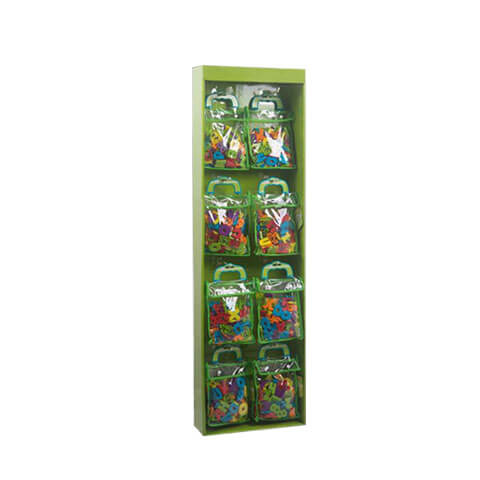Infographic: Types of Cardboard Displays and Their Uses
Cardboard displays are a powerful tool for showcasing products in retail spaces. They come in various shapes and sizes, each designed for specific uses. In this post, we break down the most popular types of cardboard displays and how they can work for you.
1. Freestanding Displays
- Best for: High-traffic areas
- Use: These displays stand on their own and don’t need support from shelves. They are perfect for catching attention from a distance.
- Ideal for: Larger products or promotions.
2. Countertop Displays
- Best for: Smaller spaces
- Use: Placed on counters or tables. These displays are compact and can be easily accessed by customers.
- Ideal for: Small products like snacks, cosmetics, or impulse items.
3. Shelf Displays
- Best for: Organized product presentation
- Use: These displays sit on shelves and hold multiple products. They help keep items neat and accessible.
- Ideal for: Grouping similar products or offering discounts on bulk items.
4. Endcap Displays
- Best for: High visibility in aisles
- Use: Positioned at the end of aisles, these displays are highly visible to shoppers as they walk down the aisles.
- Ideal for: Promotions, seasonal products, or limited-time offers.
5. Dump Bins
- Best for: Disorganized, impulse buying
- Use: Open-top bins where customers can dig through products. Great for items that are meant to be picked up on impulse.
- Ideal for: Low-cost, high-volume items like toys, small gadgets, or clearance goods.
6. Hanging Displays
- Best for: High ceilings and vertical spaces
- Use: Suspended from the ceiling, these displays hang down to grab attention from above.
- Ideal for: Small items like accessories, apparel, or promotional materials.
7. Pallet Displays
- Best for: Large quantities of goods
- Use: Pallet displays hold large quantities of products in bulk. They are often used in warehouse-style stores or for bulk sales.
- Ideal for: Large or heavy items, like drinks, groceries, or seasonal products.
8. Sidekick Displays
- Best for: Side-facing visibility
- Use: Mounted on the side of a shelf or fixture, these displays hang alongside products for added exposure.
- Ideal for: Smaller products or accessories that complement the main product.
Conclusion
Choosing the right type of cardboard display depends on your product, retail space, and marketing goals. Each display type offers unique benefits to help your products stand out and attract customers. Whether you’re using a freestanding unit or a countertop display, the right choice can make a significant difference in your sales.


